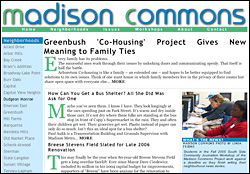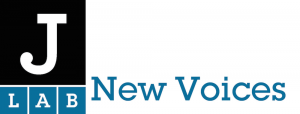 The Madison Commons Project has launched its website, www.madisoncommons.org, where neighborhood news stories written by the program’s students are being aggregated on the main page and can also be viewed in pages specific to each neighborhood.
The Madison Commons Project has launched its website, www.madisoncommons.org, where neighborhood news stories written by the program’s students are being aggregated on the main page and can also be viewed in pages specific to each neighborhood.
The success of the launch can also be seen in both local Madison newspapers, The Capital Times and Wisconsin State Journal, which are running neighborhood articles written for the Madison Commons Project.
The project’s site is more than just neighborhood news, though. It also offers discussion forums for attendees of the project’s community journalism training workshops, as well as a reporting toolkit for aspiring community journalists who may not be able to make it to the training sessions.
The toolkit links to lessons on beginning reporting, basic news reporting and writing good leads, as well as an explanation of the differences between reporters, editors and columnists.
Also offered on the site are several samples of well-written stories from local newspapers with notes added by the Madison Commons instructors that break down the different elements of a news story and how they are shown in the samples.
The site now covers more than 20 neighborhoods in the Madison area, with content coming from several sources.
The first source is the group of citizens who have attended the community reporting workshops held on Madison’s East and South sides. These areas are generally lower income and have a higher presence of minorities, said Lew Friedland, a journalism professor at the University of Wisconsin who runs the project. The project has conducted two workshops to far, training about 25 participants. Each workshop series consisted of three, three-hour sessions. At the suggestion of attendees, the Commons is revising the format to conduct training over four two-hour sessions instead.
The second major source of content is from journalism students at the University of Wisconsin-Madison. Most are seniors in Friedland’s advanced reporting class and each student is required to complete five assignments:
- Civic mapping a neighborhood on the East or South side.
- Writing a publishable profile of that neighborhood.
- Writing a neighborhood issue story.
- Linking this story to broader civic concerns.
- Writing a profile of a person or organization in the neighborhood.
“On the whole, the work has been very good and important for producing content for the site,” Friedland said of the students’ assignments.
A third source is from neighborhood newsletters and newspapers. “Madison has several very good neighborhood papers, corresponding to the East, South and North sides of town. We have collaborative relationships with each and use their material with full credit.” Friedland said.
Fourth is the group of daily newspapers that have partnered with the Madison Commons Project. When any of these dailies publish a neighborhood-relevant story, the Commons has permission to republish them with credit. In return, the dailies are using stories written specifically for the project.
The final source, still being developed, is content from small neighborhood bulletins. Friedland said the Commons is collaborating with the City of Madison to hold writing workshops this summer specifically for small newsletter and bulletin writers.
While Friedland said the general response from the community has been overwhelmingly positive, he did say there has been some cynicism from local bloggers who don’t trust the project because of its connections to local newspapers.
However, Friedland said he is not worried about the naysayers.
“I really do believe our content will have an impact across the board in terms of raising the visibility of neighborhood news and, more importantly, creating a robust common space for people to learn from each other,” he said



